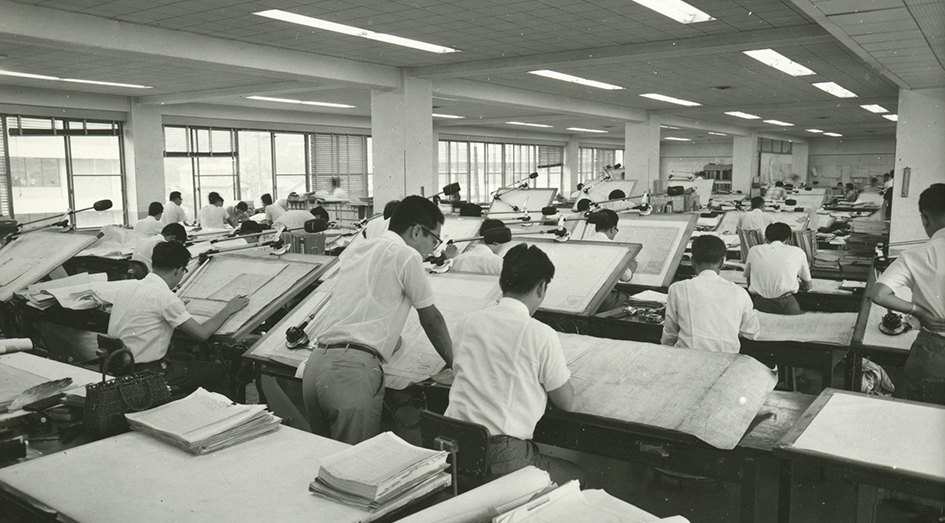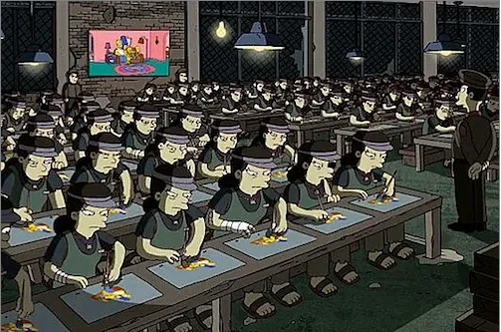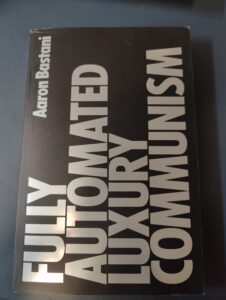“Hey bud, I hear you’re a pretty good at digging ditches, do you want some work?”
“Sure thing. Whadaya need?”
“Just need you to dig this ditch the length of my property here alongside this rode.”
“Sure thing, lemme go grab my excavator, and we can get it done this afternoon.”
“Whoa, no, can’t have you using that excavator.”
“Why? Too loud? Bad hydraulics? What’s up?”
“Naw you gotta use this.” Holds up a spoon.
“Excuse me? That doesn’t make any sense. Lemme grab the excavator and we can get the job done in an a couple hours. A spoon will take forever.”
Yeah, well ya see, ya gotta use the spoon. It doesn’t count otherwise.
What? It doesn’t count?
Doesn’t count. Use the spoon, or don’t get paid.
This is the Ditch Digger’s Dilemma.
In an era of high technology, of power tools and machinery, of extensions of man, of solutions to the problems that can amplify our capabilities a thousand-fold, the labourer laments being forced to use the low power, backbreaking way in order for the work to count, for it be accepted.
And the reason why is frustrating, it’s maddening.
The reason? Aesthetics and ideology.
Which are choices, or course, but it means we can also make different choices. We’ll recognize that it can be difficult to step outside an ideological frame we’re in and see what other options there are, but they do exist.
When the Studio Ghibli transformer on huggingface.co was intially released, it didn’t garner that much attention, but when OpenAI released a similar tool in March of 2025, the profile of the platform suddenly had everyone talking about it. Most notably, was the creator of Studio Ghibli, Hayao Miyazaki, who called it “an insult to life itself“. The transformer (a type of AI deep learning model) allows the creation of sequences of text and elements of image quickly, in ways that are recognizable to a human audience, and in so doing eliminate a lot of the work in the creation of those images.
And the Studio Ghibli model of animation is very labor intensive – hand-drawn frames labored over for days, weeks, months. A famous 4 second clip for the 2013 film The Wind Rises took a single animator over 15 months to create.
Assembling all the scenes into a full film requires a large number of employees working for years to bring it to fruition. It can be laborious, exacting and backbreaking. But animation isn’t the first industry where we’ve seen the impact of this type of automation. Take a look at engineering in the 20th century.


On the left we see engineers and draftsmen prior to the introduction of CAD (Computer Aided Design) in the 1960s. On the right, traditional animation, albeit from a Banksy-created opening montage to the Simpsons (“MoneyBART”, S21E03, 2010). While the introduction of CAD and other digital tools has radically transformed what modern engineering shops look like, engineering is still a viable career path. The total number of engineers employed worldwide has only grown. They can use the digital tools to engage in more projects, more quickly, across a broader spectrum of fields than existed previously.
This is the crossroads art is standing at with the AI tools as well. Rather than have one man labour for 15 months on a single 4 seconds of film for someone else in someone else’s style, these creators can create, develop, and release their own stories, their own art, to a broader part of the population than before.
If art only counts if its creator suffered, then that is what you’re consuming – it’s part of the aesthetic. Or rather, the suffering outweighs the other aesthetic concerns. Aesthetic elements are secondary. And in an era of Late Capitalism, you’re condemning someone to suffer for money, in order to live.
Rejection of the AI tools by traditional and/or trained artists leads to some sub-par works being put up. Pipeline tools choose the first available option, or are only superficially curated, and then posted automatically using workflow automation tools like Zapier, make.com and n8n. It’s given us a lot of “slop”.
This slop is what is getting used to pejoratively describe most AI art on the web. Much of the use of the term traces back to an article from The Atlantic in August 2024, by Charlie Warzel, but I’ve managed to find instances of the use of the term #aislop on Mastodon going back to as early as October of 2023 (possibly) and January 2024 (definitely). The use of the term may have originated in other public spheres and social media prior to that however.
The slop is the easily generated content that’s now flooding the web as more people now find creative tools accessible to them, even if they lack the skill or training to truly make them shine. Which is a shame. With a little bit of work, some knowledge and training of art theory, you get to something more usable. You can move away from the realm of “slop”, and into something more expressive.
This ties into the shift within the AI realm from prompt engineering to context engineering (and glimpsed faintly on the horizon: “Worldbuilding” (but we’re going to talk about that in an episode real soon). Context engineering is “the practice of designing systems that decide what information an AI model sees before it generates a response” (Datacamp, 2025).
What is context engineering for a movie but the script? Or is there more to it? Hmmm. Perhaps…

The tension with the AI tools is that at their core they are ultimately part of FALC – Fully Automated Luxury Communism (Bastani, 2020). The AI tools are a communistic technology – everything goes in (ref Soylent Culture), and ideally everyone can pull from them, but it is being pulled under tension by warring capitalists who seek to use it for their own ends. There are those in the tech sphere – the techno-capitalists (or cloudalists, vectoralists, “tech bros”; whatever philosophers are naming this group) building it and trying to capitalize on it in the usual ways: enforcing arbitrary tiers for uses, building hierarchy, installing friction, commodifying the users to sell to advertisers. You know, the usual. And they’re opposed on the other side by the rentiers seeking to extend their monopoly control on the IP, the intellectual property. They’re also capitalizing on the resource in the usual ways: gate-keeping access and distribution, locking in restrictive terms, installing friction via formats and region locking, commodifying the users to sell to advertisers. You know, the usual.
And like in any war, try not to get caught in the middle.
There is propaganda flying back and forth on both sides, of course, that you’re probably exposed to daily. This propaganda shapes and drives the discourse, leading to pilling and pipelines on both sides of the argument. With respect to AI, we’re starting to see a new pill arise, one that’s coloured Mauve.
Each of these groups of capitalists are facing challenges when dealing with the AI, and this much of this is inherent in the technology itself. For the techno-capitalists, trying to monetize it isn’t quite working – they’re losing a lot of money, and the traditional methods listed above aren’t recouping the investment. For the rentiers of the cultural industries, the paradox is that the AI tools do make the production of digital products easier, so they want to use them (at least at the C-level), but they’re facing pushback and resistance from the workers in those industries who view the tools (correctly) as a threat to their current employment.
So what’s a poor ditch digger to do? Pick sides in the ongoing War of Art? That’s one option, though the prospects if either side wins aren’t that great to be honest. Another would be STMOP. Rather, Seize the Means of Production. If the AI Tools are the new means of (digital) production, you need to grab that mop. And Sweep.

